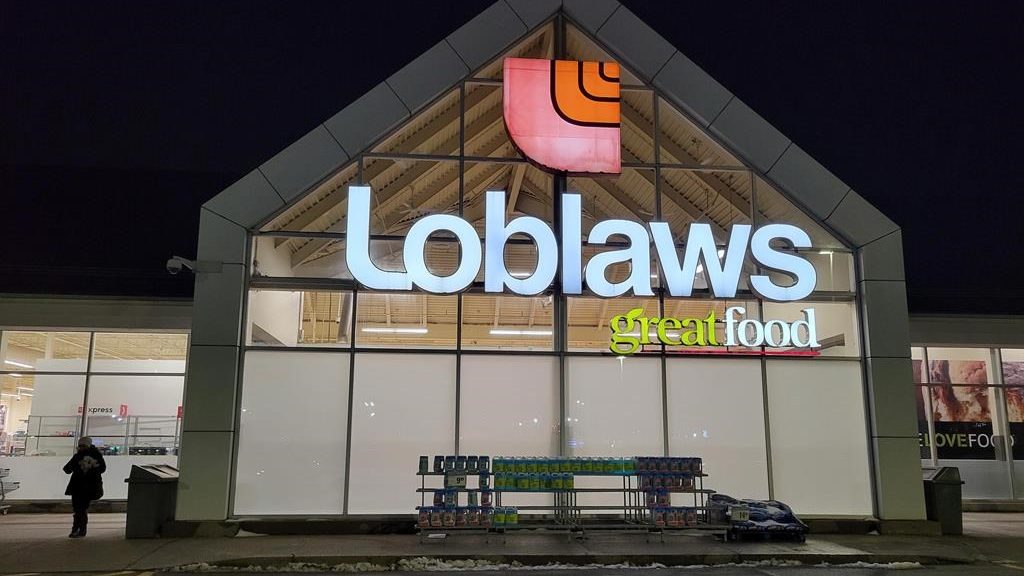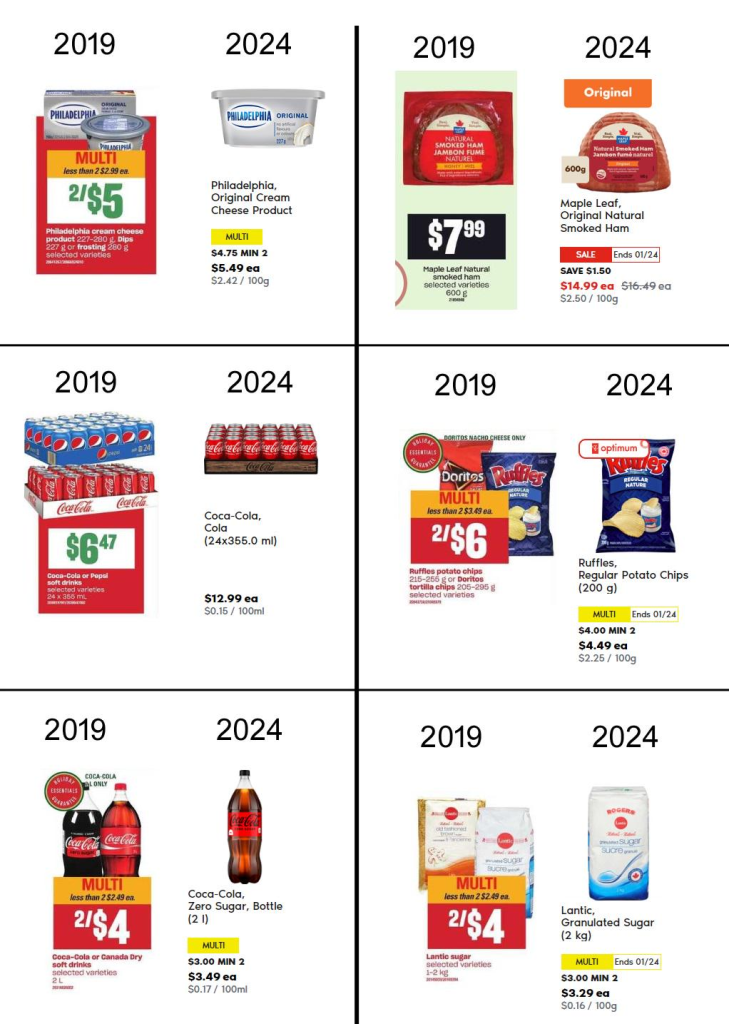Stunning uptick in Canadian grocery prices as flyer compares 2019 to 2024

Posted Jan 23, 2024 10:59:47 AM.
Last Updated Jan 23, 2024 12:31:50 PM.
If you gasp every time you buy groceries, you’re not alone. Now, there’s some proof that shows how expensive things have become in the last five years.
A Loblaw flyer, posted to Reddit, compares prices from 2019 to 2024, detailing a stark spike in prices.
In 2019, a tub of Philadelphia cream cheese was $2.99 for one, or 2 for $5 if it was on sale. Today it’s $5.49. A case of 24 pop cans was $6.47, today the same product is almost $13, meanwhile, a 600-gram pack of natural smoked ham went from $7.99 to $16.49 today — more than double the price five years ago.

And thanks to “shrinkflation,” consumers today are often getting less of the product as well.
Sylvain Charlebois, director of the Agri-Food Analytics Lab at Dalhousie University, says, unfortunately, people should get used to this — at least in the short term.
“Later this year, we are expecting some of these companies to re-adjust prices because loyalty is going to be an issue,” he told CityNews. “A lot of people are bargain-hunting. We’re not loyal towards anything now, the brand, the store. Grocers will see this as an issue.”
He thinks as big companies and retailers get wise to that, they’ll look to reduce prices to keep customers happy.
Charlebois says Canadian consumers should start to see a difference in prices by mid-summer.
“The Food and Agriculture Organization (FAO) run by the UN, they monitor prices around the world, and prices are dropping everywhere. Typically, the FAO will tell Canada, ‘Well, in six to nine months from now, you should start seeing some changes with food prices.'”
In the latter half of the year, consumers should expect fruit and dairy prices to drop, but not for vegetables and meat.
CityNews asked customers grocery shopping Tuesday morning what they thought of the price comparison.
“I’ve never had inflation like that in my life and I’m 72,” said one man.
“I’m not saving money,” chuckled another shopper. “Sometimes, I try to purchase less things or change to another brand. Trying to even the price a bit.”
One woman told CityNews that it’s becoming increasingly difficult for her and her partner to afford enough food to last a week, let alone a month.
Another man sold his car in a bid to save money, which he says, ends up being spent on groceries.
“I’m speechless. I can’t really say anything, other than where’s my money really going?”
The federal government has previously said it’s working with the industry to stabilize food prices.

Last month, the Centre for Future Work said grocers were expected to make more than $6 billion in 2023 — a new record and an increase of eight per cent from 2022. The new data from the institute found food retailers are now earning more than twice as much profit as they did before the COVID-19 pandemic.
Using data from Statistics Canada, the report found the net income margin on food and beverage retailing has consistently exceeded three per cent of total revenues since mid-2021, more than double the average margin between 2015 and 2019.
The organization says the data suggests retailers took advantage of the pandemic and its aftermath to increase profits.








